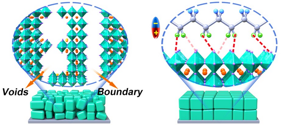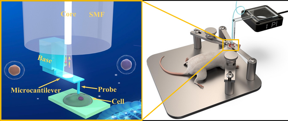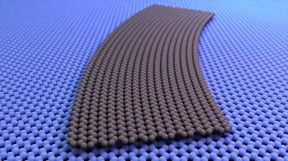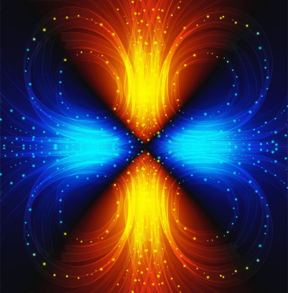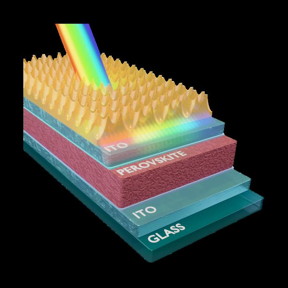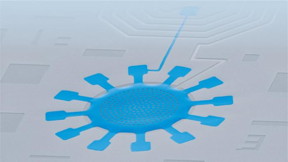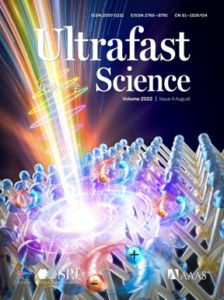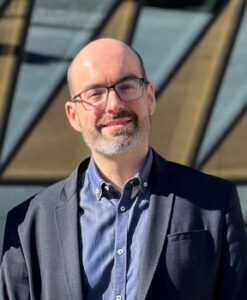Home > Press > Polymer p-doping improves perovskite solar cell stability
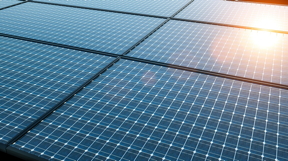 |
Abstract:
Perovskite solar cells have drawn a significant amount of research attention as a promising alternative to conventional silicon-based solar cells, due to their efficiency in converting sunlight into electricity. Perovskite solar cells are a hybrid of organic and inorganic materials and consist of a light-harvesting layer and a charge-transporting layer.
Polymer p-doping improves perovskite solar cell stability
Lausanne, Switzerland | Posted on January 20th, 2023
However, stability issues have hindered the commercialization and widespread use of PSCs, and achieving operational stability has become a rallying cry among scientists in the field. Now, researchers led by Michael Grätzel at EPFL and Xiong Li at the Michael Grätzel Center for Mesoscopic Solar Cells in Wuhan (China) have developed a technique that addresses stability concerns and increases the efficiency of PSCs.
The researchers introduced a phosphonic acid-functionalized fullerene derivative into the charge-transporting layer of the PSC as a “grain boundary modulator”, which helps strengthen the perovskite crystal structure and increases the PSC’s resistance to environmental stressors like heat and moisture.
The team also developed a redox-active radical polymer called poly(oxoammonium salt) that effectively “p-dopes” the hole-transporting material – a crucial component of the PSCs. The polymer, acting as a “p-dopant,” improves the conductivity and stability of the hole-transporting material, a crucial component of the cells. The process of “p-doping” involves introducing mobile charge electronic charge carriers into the material to improve its conductivity and stability, and in this case mitigated the diffusion of lithium ions, a major problem that contributes to the operational instability of PSCs.
With the new technique, the scientists achieved power conversion efficiencies of 23.5% for small PSCs and 21.4% for larger “minimodules.” These efficiencies are comparable to traditional solar cells, with the added advantage of an improved stability for PSCs. The solar cells retained 95.5% of their initial efficiency after more than 3200 hours of continuous exposure to simulated sunlight maintaining the temperature at 75°C over the whole period, a significant improvement over previous PSC designs.
The new approach can revolutionize the use of PSCs, making them accessible for use on a larger scale. The researchers believe that their technique could be easily scaled up for industrial production and could potentially be used to create stable, high-efficiency PSC modules.
Other contributors
Wuhan University of Technology, Wuhan 430070, Hubei, China
Southern University of Science and Technology (Shenzhen)
Wuhan University, Wuhan 430072, Hubei, China
Chinese Academy of Sciences (CAS)
####
For more information, please click here
Contacts:
Media Contact
Nik Papageorgiou
Ecole Polytechnique Fédérale de Lausanne
Office: 41-216-932-105
Expert Contact
Michael Graetzel
EPFL
Office: +41 21 693 31 12
@EPFL_en
Copyright © Ecole Polytechnique Fédérale de Lausanne
If you have a comment, please Contact us.
Issuers of news releases, not 7th Wave, Inc. or Nanotechnology Now, are solely responsible for the accuracy of the content.
| Related Links |
| Related News Press |
News and information
![]() Manufacturing advances bring material back in vogue January 20th, 2023
Manufacturing advances bring material back in vogue January 20th, 2023
![]() Researchers demonstrate co-propagation of quantum and classical signals: Study shows that quantum encryption can be implemented in existing fiber networks January 20th, 2023
Researchers demonstrate co-propagation of quantum and classical signals: Study shows that quantum encryption can be implemented in existing fiber networks January 20th, 2023
![]() Approaching the terahertz regime: Room temperature quantum magnets switch states trillions of times per second January 20th, 2023
Approaching the terahertz regime: Room temperature quantum magnets switch states trillions of times per second January 20th, 2023
Perovskites
![]() New method addresses problem with perovskite solar cells: NREL researchers provide growth approach that boosts efficiency, stability December 29th, 2022
New method addresses problem with perovskite solar cells: NREL researchers provide growth approach that boosts efficiency, stability December 29th, 2022
![]() Predicting the device performance of the perovskite solar cells from the experimental parameters through machine learning of existing experimental results November 18th, 2022
Predicting the device performance of the perovskite solar cells from the experimental parameters through machine learning of existing experimental results November 18th, 2022
![]() Scientists have proposed a new material for perovskite solar cells: It is cheaper its analogues, easier to manufacture and to modify October 28th, 2022
Scientists have proposed a new material for perovskite solar cells: It is cheaper its analogues, easier to manufacture and to modify October 28th, 2022
![]() Solvent study solves solar cell durability puzzle: Rice-led project could make perovskite cells ready for prime time September 23rd, 2022
Solvent study solves solar cell durability puzzle: Rice-led project could make perovskite cells ready for prime time September 23rd, 2022
Govt.-Legislation/Regulation/Funding/Policy
![]() Vertical electrochemical transistor pushes wearable electronics forward: Biomedical sensing is one application of efficient, low-cost transistors January 20th, 2023
Vertical electrochemical transistor pushes wearable electronics forward: Biomedical sensing is one application of efficient, low-cost transistors January 20th, 2023
![]() Approaching the terahertz regime: Room temperature quantum magnets switch states trillions of times per second January 20th, 2023
Approaching the terahertz regime: Room temperature quantum magnets switch states trillions of times per second January 20th, 2023
![]() Lithium-sulfur batteries are one step closer to powering the future January 6th, 2023
Lithium-sulfur batteries are one step closer to powering the future January 6th, 2023
Possible Futures
![]() Vertical electrochemical transistor pushes wearable electronics forward: Biomedical sensing is one application of efficient, low-cost transistors January 20th, 2023
Vertical electrochemical transistor pushes wearable electronics forward: Biomedical sensing is one application of efficient, low-cost transistors January 20th, 2023
![]() Approaching the terahertz regime: Room temperature quantum magnets switch states trillions of times per second January 20th, 2023
Approaching the terahertz regime: Room temperature quantum magnets switch states trillions of times per second January 20th, 2023
![]() Correlated rattling atomic chains reduce thermal conductivity of materials January 20th, 2023
Correlated rattling atomic chains reduce thermal conductivity of materials January 20th, 2023
Discoveries
![]() Manufacturing advances bring material back in vogue January 20th, 2023
Manufacturing advances bring material back in vogue January 20th, 2023
![]() Approaching the terahertz regime: Room temperature quantum magnets switch states trillions of times per second January 20th, 2023
Approaching the terahertz regime: Room temperature quantum magnets switch states trillions of times per second January 20th, 2023
![]() Correlated rattling atomic chains reduce thermal conductivity of materials January 20th, 2023
Correlated rattling atomic chains reduce thermal conductivity of materials January 20th, 2023
Announcements
![]() Manufacturing advances bring material back in vogue January 20th, 2023
Manufacturing advances bring material back in vogue January 20th, 2023
![]() Researchers demonstrate co-propagation of quantum and classical signals: Study shows that quantum encryption can be implemented in existing fiber networks January 20th, 2023
Researchers demonstrate co-propagation of quantum and classical signals: Study shows that quantum encryption can be implemented in existing fiber networks January 20th, 2023
Interviews/Book Reviews/Essays/Reports/Podcasts/Journals/White papers/Posters
![]() Manufacturing advances bring material back in vogue January 20th, 2023
Manufacturing advances bring material back in vogue January 20th, 2023
![]() Researchers demonstrate co-propagation of quantum and classical signals: Study shows that quantum encryption can be implemented in existing fiber networks January 20th, 2023
Researchers demonstrate co-propagation of quantum and classical signals: Study shows that quantum encryption can be implemented in existing fiber networks January 20th, 2023
![]() Approaching the terahertz regime: Room temperature quantum magnets switch states trillions of times per second January 20th, 2023
Approaching the terahertz regime: Room temperature quantum magnets switch states trillions of times per second January 20th, 2023
Energy
![]() Electricity harvesting from evaporation, raindrops and moisture inspired by nature January 6th, 2023
Electricity harvesting from evaporation, raindrops and moisture inspired by nature January 6th, 2023
![]() New method addresses problem with perovskite solar cells: NREL researchers provide growth approach that boosts efficiency, stability December 29th, 2022
New method addresses problem with perovskite solar cells: NREL researchers provide growth approach that boosts efficiency, stability December 29th, 2022
![]() New insights into energy loss open doors for one up-and-coming solar tech November 18th, 2022
New insights into energy loss open doors for one up-and-coming solar tech November 18th, 2022
Grants/Sponsored Research/Awards/Scholarships/Gifts/Contests/Honors/Records
![]() The National Space Society Congratulates NASA on the Success of Artemis I Same-day Launch of the Hakuto-R Lunar Landing Mission will Help Support Future Lunar Crews December 12th, 2022
The National Space Society Congratulates NASA on the Success of Artemis I Same-day Launch of the Hakuto-R Lunar Landing Mission will Help Support Future Lunar Crews December 12th, 2022
![]() How “2D” materials expand: New technique that accurately measures how atom-thin materials expand when heated could help engineers develop faster, more powerful electronic devices November 18th, 2022
How “2D” materials expand: New technique that accurately measures how atom-thin materials expand when heated could help engineers develop faster, more powerful electronic devices November 18th, 2022
![]() New insights into energy loss open doors for one up-and-coming solar tech November 18th, 2022
New insights into energy loss open doors for one up-and-coming solar tech November 18th, 2022
Research partnerships
![]() New insights into energy loss open doors for one up-and-coming solar tech November 18th, 2022
New insights into energy loss open doors for one up-and-coming solar tech November 18th, 2022
![]() “Kagome” metallic crystal adds new spin to electronics October 28th, 2022
“Kagome” metallic crystal adds new spin to electronics October 28th, 2022
- SEO Powered Content & PR Distribution. Get Amplified Today.
- Platoblockchain. Web3 Metaverse Intelligence. Knowledge Amplified. Access Here.
- Source: http://www.nanotech-now.com/news.cgi?story_id=57279
- 10
- 3d
- a
- Academy
- accessible
- accuracy
- accurately
- achieved
- achieving
- added
- addresses
- Adds
- advances
- ADvantage
- After
- alternative
- Alzheimer’s
- among
- amount
- and
- Application
- approach
- architecture
- Artemis
- attention
- back
- barrier
- batteries
- become
- believe
- biomedical
- bring
- called
- carriers
- case
- Cells
- Center
- CGI
- chains
- challenge
- charge
- cheaper
- China
- closer
- COM
- comment
- commercialization
- comparable
- complex
- component
- computers
- computing
- Concerns
- conducting
- conductivity
- Connect
- content
- continuous
- conventional
- Conversion
- could
- create
- CRISPR
- crucial
- Crystal
- December
- deliver
- demonstrate
- demonstrated
- Design
- designs
- develop
- developed
- develops
- device
- Devices
- Diffusion
- discover
- diseases
- disorders
- doors
- drawn
- durability
- easier
- easily
- effectively
- efficiencies
- efficiency
- efficient
- electricity
- Electronic
- Electronics
- emission
- encryption
- energy
- Engine
- Engineers
- environmental
- Ether (ETH)
- existing
- Expand
- Exposure
- faster
- feat
- field
- First
- Forward
- found
- from
- future
- GAS
- generate
- gif
- Growth
- Harvesting
- help
- helps
- highly
- HOURS
- How
- HTTPS
- Hybrid
- implemented
- implications
- improve
- improved
- improvement
- improves
- in
- Inc.
- Increases
- industrial
- Industrial Production
- information
- initial
- insights
- inspired
- instability
- introduced
- introducing
- issues
- IT
- January
- Japan
- landing
- large-scale
- larger
- launch
- layer
- learning
- Led
- linked
- links
- lithium
- loss
- Lunar
- machine
- machine learning
- Magnets
- major
- make
- Making
- material
- materials
- measures
- merging
- method
- mice
- Michael
- Mission
- Mobile
- Modules
- molecular
- molecule
- more
- move
- nanotechnology
- Nasa
- National
- net
- Neutral
- New
- news
- November
- october
- ONE
- open
- opens
- operational
- optimal
- organic
- parameters
- participation
- path
- performance
- period
- PHP
- plato
- Plato Data Intelligence
- PlatoData
- please
- polymer
- Post
- posted
- potentially
- power
- powerful
- Powering
- previous
- Prime
- Problem
- process
- Production
- project
- promising
- proposed
- Protein
- Proteins
- provide
- puzzle
- Quantum
- quantum computers
- quantum computing
- radical
- ready
- reduce
- regime
- Releases
- research
- researchers
- Resistance
- responsible
- Results
- return
- revolutionize
- Room
- salt
- Save
- Scale
- Science
- Science and Technology
- SCIENCES
- scientists
- Search
- September
- Share
- shenzhen
- Shows
- signals
- significant
- small
- Society
- solar
- Solar cells
- Solves
- Space
- Spin
- Stability
- stable
- start
- States
- Step
- Strengthen
- structure
- Study
- submit
- success
- such
- sunlight
- support
- Switch
- switzerland
- system
- team
- Technology
- The
- their
- therapy
- thermal
- Through
- times
- to
- tool
- toward
- traditional
- treating
- trillions
- unique
- university
- unprecedented
- us
- use
- Water
- Wave
- wearable
- which
- widespread
- will
- Yahoo
- zephyrnet










